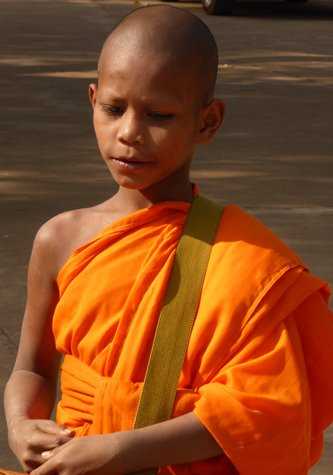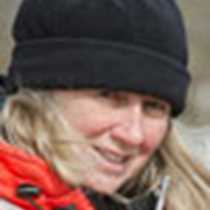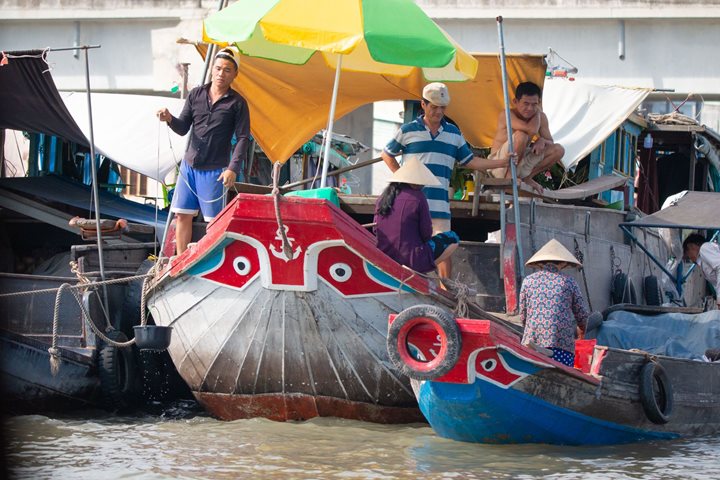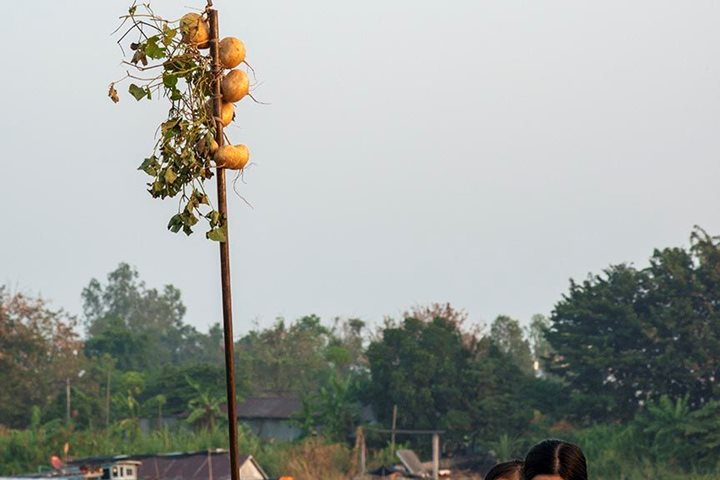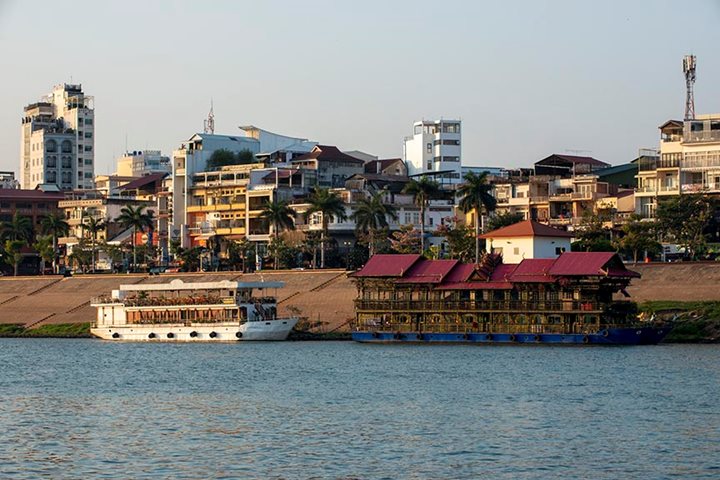“Two funerals and a wedding,” sounds like a movie title misquoted. Instead, those words pretty much summarize our day. Our itinerary certainly was not planned around these events but we found ourselves in the midst of them from morning until night.
The call to mosque drifted across the river to awaken us at 0500. If one jammed the pillow over one’s head or simply didn’t hear, forty-five minutes later the sound of drums and cymbals floated from the opposite shore. Perhaps practice had begun for the celebration of the Chinese and Vietnamese New Years yet to come. On the shores in close proximity were many Buddhist temples and now and then chanting could be heard. It was our first day on the Mekong in Cambodia, the sun had not even hinted at its arrival but our education had begun. As westerners, we had much to learn about this cultural diversity.
Wat Hanchey is perhaps most famous for the remnants of a seventh century pre-Angkorian temple although a modern monastery dominates the site in this day and age. With pagoda or temple grounds usually comes odd displays of statuary and this site was no exception. From giant fruits to a concrete zoo and multitudinous Buddha figures, they were all to be found. But today it was the human activity that captured our attention. This was day seven, the last and final day in the funeral celebration for the former abbot and the hilltop Wat swarmed with activity. Saffron clad monks had arrived from far and wide as had flocks of somberly dressed nuns. Cameras, cell phones, and tablets were in abundance, not just in the hands of the tourists but the visiting monks too chose to document their journey in a modern way. And yet, the final celebration was an old and ancient tradition. The streets were lined with locals bearing gifts of food or currency and an endless parade of monks and their aides moved from one person to another receiving these blessed offerings.
Angkor Ban is normally a quiet place where hundred-year-old stilt homes snuggle close to the walls of the temple grounds. Oxen graze beneath the homes and chickens scratch in the bushes. Horse drawn carts dash down the dusty main street competing with ox carts, bicycles, and trucks. Here too we discovered that Sunday was not a day of rest. On the shoreline, Cham fisherman smoked tiny fish fillets while from the village two distinctive types of music blared. At one end of the path, a funeral was underway for a tragic accident victim. Not far away modern music and dancers in skimpy red dresses entertained wedding guests. We stopped. We watched. We photographed. And then we moved on.
As the river flows towards the sea, so do we, now more aware of the differences and similarities of this land and those from whence we come.

